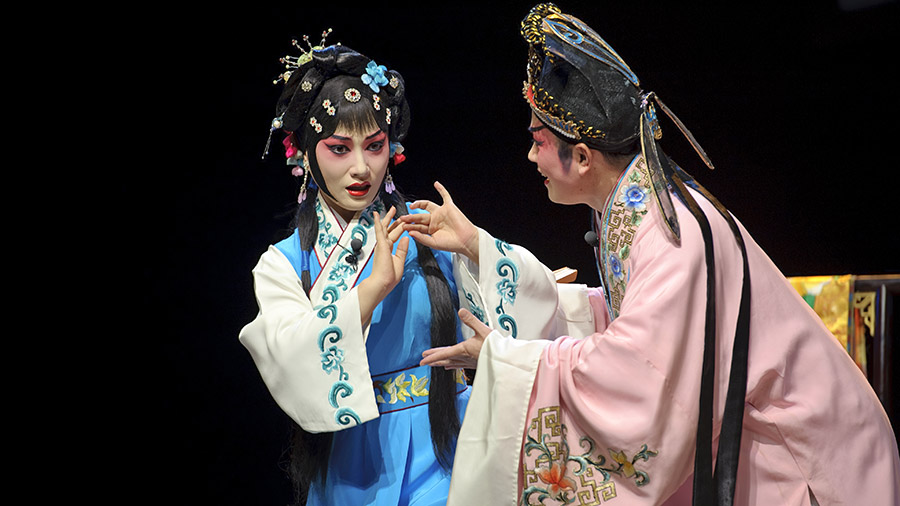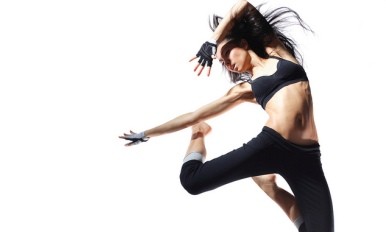#LCSD
Search Result: 1141
This concert will feature Ricky Yeung Wai-kit, the first dizi performance doctoral graduate in China, and Sha Jingshan, a well-known plucked instrument player from Guangzhou. The concert title, Cantonese Rhyme, Poetic Homeland, is derived from Yeung’s original composition supported by the China National Arts Fund 2024 Performing Arts Production Project. The programme includes a diverse selection of music, featuring original dizi and pipa pieces by Yeung and Sha, as well as new interpretations of Cantonese music and dizi classics. Renowned Hong Kong pianist Dr Timothy Kwok will provide the accompaniment.
Artistic Director/ Conductor: Tan DunPerformers: Dunhuang Ancient Music Consort
Trumpet: Erik TruffazBass: Marcello GiulianiKeys: Alexis AnérillesDrums: Raphaël Chassin
Artistic Director: Tan DunPerformers: Xiangxi Tujia Women’s Daliuzi and Hong Kong Women’s Percussion Ensemble
Janáček: "In the Mists"Schubert (trans. Liszt): Geistliche Lieder, S. 562, No. 1, "Litanei auf das Fest Aller Seelen"Beethoven: Piano Sonata No. 28 in A, Op. 101Mahler (trans. Anson Wong): "Symphony No. 5", IV. AdagiettoSchumann: Symphonic Études, Op. 13 (with 5 Posthumous Variations)
Double Bass: Jeff LehmburgDrum: Dean LiViolin: Sean LaiViolin: Vivian ShenViola: Tiffany ChengCello: Bernard Chan
An Opera in Two ActsSung in German, Dialogue in English with Chinese and English SurtitlesProducer: Warren MokConductor: Dane LamDirector: Shuang ZouOpera Hong Kong OrchestraOpera Hong Kong ChorusOpera Hong Kong Children Chorus
Please refer to Chinese synopsis.
The programme includes part 1-exhibition and part 2-workshop performance.Please refer to the Chinese version for details.
Please refer to Chinese version.
Performers: Warren Mok, Wang Bingbing, Cally Kwong Mei-yun, Felix Lam Chi-lok, Chantel Yiu Cheuk-faye, Tang Yuen-ha, Cheung Ming-man, Leung Kin-fung, Leung Ka-lok, Ricky Yeung Wai-kit, Cheng Wai, Alex Tam, Mak Ka-lok, Chan Wing-wah, Mui Kwong-chiu, Cheung Ka-shing, Law Kar-ying, Global Symphony Orchestra, Opera Hong Kong Chorus, The Hong Kong Polytechnic University Students’ Union Choir, Harmonic Singers
The concert combines a diverse range of music genres including classical music, tango music, jazz, spirituals, French chanson and film scores. Programme includes works by Fauré (Arr. Wilhelm Kaiser-Lindemann), Piazzolla (Arr. José Carli) and Gershwin (Arr. Michael Zigutkin), etc.
For the programme introduction, please refer to the Chinese version.
Yoga Wisdom for All IATC(HK) Critics Award 2023 – Award of Scenography of the Year, Nomination of Director of the Year After a breathtaking premiere with a full house in 2023, this apotheosis of theatre will be re-staged in 2025! Hailed as “one of the most thought-provoking stage performances of the summer of 2023”, Bhagavad Gitacomes back in June this year! Bhagavad Gita, which originated from Indian epic Mahabharata, is a story of how two camps of cousins went to war over the kingdom. At the eve of war, Lord Krishna revealed the wisdom of the three paths of Indian Yoga to warrior Arjuna: Karma Yoga, Jnana Yoga, and Bhakti Yoga; by fulfilling their “Dharma” without selfish motives, everyone can be liberated from the wheel of samsara and granted the state of moksha. Their dialogue is the Bhagavad Gita. “Bhagavad” refers to “The Venerable”; “Gita” refers to “Chant”. Today, the scourge of war continues to ravage humanity, and we also face the relentless onslaught of artificial intelligence. In these turbulent times, the Bhagavad Gita may hold the answers to humanity's most pressing questions: What is existence? How can we find our roles and values in life?Bhagavad Gita is a spiritual journey filled with visual and auditory imagery. Director Tang Shu-wing presents the ultimate theatrical aesthetics in the Bhagavad Gita - storytelling, acting, singing, physical movement, dance, music, and visuals, along with the iconic open-close pool and inverted tree, leading the audience into the vast world of the Indian epic while also reflecting on the current situation of today’s era. In this re-performance, the renowned actress Mandy Wong reprises the lead role, joined by the acclaimed singer-songwriter and actor Endy Chow as narrators, working with a dynamic ensemble of performers to bring this epic masterpiece back to the stage. “It was like joining a guided meditation.” ——Theatre Critic, Bernice Chan “The cast otherwise excel in interpreting abstract ideas through dance and physical movement.” ——South China Morning Post “The stage design is an astonishing symbol…it reveals the core spirit of storytelling under the tree.” ——Hong Kong Economic Journal “If the goal was to spur the audience into “raising questions about the spiritual paths” available to us, Tang seems to have made it.” ——China Daily Director/Adaptation: Tang Shu-wingAdaptation/Script Editor: Jim HuiCast: Mandy Wong, Endy Chow, Lau Ting-kwan, Kingsan Lo, Peggy Chow, Jasmine Lam, Carmen Yu, Elvin CheungAssistant Director: Rocky WongStage Designer: Vanessa SuenLighting Designer: Yeung Tsz-yanMusic Composer: Lam Kwan-fai Sound Designer: Anthony YeungCostume Designer: Jade LeungVideo Designer: Henky ChanBharatanatyam Choreographer: Sandhya GopalProduction Manager: Lawrence LeeProducer: Effie Wong
2025/04/25 (FRI) 07:15PM "The Story of Princess Cheung Ping" 2025/04/26 (SAT) 01:30PM "The Last Emperor of Southern Tang" 2025/04/26 (SAT) 07:15PM "The Purple Hairpin" 2025/04/27 (SUN) 01:30PM "The Dream of the Red Chamber"


























